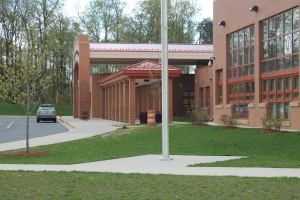 by Lori Morrow
by Lori Morrow
I recently attended the Maryland Parent Teacher Association (PTA) convention on July 14-15. It was good to connect with other Prince George’s County Public Schools and Maryland PTA leaders. And since my last convention was seven years ago, it was great to refresh myself on PTA operations. After reflecting on the weekend, here are recommendations based on my experiences as a PTA/PTO president and board member:
- State your mission. This was emphasized in every convention workshop. Why are we here? What is the purpose of our organization? Whether you are a PTA or PTO (Parent Teacher Organization), your mission should be clearly stated in your bylaws or guiding document. Read it out loud at Board or Membership meetings. Type it as a header or footer on your flyers. It serves as a reminder that all actions should support that mission as well.
- Read your bylaws. Reading bylaws and guiding documents should be one of the first things new board members do. Make your bylaws available for all members (and potential members) as well so that there is transparency in how the organization operates. For PTAs, bylaws must be updated and submitted to the state PTA every three years. If your bylaws state that you follow Robert’s Rules of Order, become familiar with them and use them to help conduct meetings in an efficient and orderly manner.
- Publish standing rules. These are the day-to-day policies and procedures that your PTA/PTO follows that are not covered in your bylaws. Standing rules are established by the local organization or committee and do not need to be submitted to the state. Examples of standing rules could include policies for reimbursement; procedures to follow in planning events; procedures about maintaining binders for board members; or job/committee descriptions that are not outlined in the bylaws.
- Be transparent. I cannot emphasize this one enough! Let members know when and how decisions are made. Provide explanations for budget and committee decisions. The board should never operate in secret.
- Don’t take it personally. This can be a challenge because we are all human and it is easy to become emotional with decisions that impact our children. There will always be someone who questions a decision or is not happy with an outcome. As much as possible, take a step back and lead the PTA/PTO as you would a business. Follow the bylaws and rules that will help you make decisions in the best interest of all children.
- Collaborate. Talk to staff, parents, and the community members and be open to other opinions and ideas. Work as a team to make things happen, and respect that sometimes your board or membership may vote in a way that is different from what you would do on your own. Network with parent groups outside your school as well. No matter what the issue is, chances are good that someone else has faced it before.
- Be inclusive. Invite everyone to join. The best recruiting tool is face-to-face communication, but hardcopy forms, emails, social media, and phone calls can work too. Never assume that someone won’t be interested before they are even asked. PTA/PTO membership is open to anyone that shares your mission, so reach out to extended family, neighbors, community members, and local businesses. In the same vein, never turn away a volunteer. There is always something else that can be done. Ask what they are interested in doing, or how much time they can commit.
- Keep good records. All officers of the organization have a fiduciary responsibility to make sure the organization stays in good financial standing. Know what the obligations are legally and financially, and ensure that the PTA/PTO is meeting them. You will not be in this position forever. Keep in mind what information would have been useful when you were starting and write it down.
- Know your limits. Being a PTA/PTO leader does not mean that you are single-handedly responsible to plan and execute every event, fundraiser, and activity of the organization. Delegate, work as a team, and sometimes you just have to say “no” when you don’t have enough volunteers to make things happen. It is okay.
- Think advocacy. There are PTAs and PTOs that are great at planning events and fundraisers and family nights, but don’t forget to return to your mission of advocacy. It is the difference between doing a fundraiser to support something once, and advocating for permanent funding at the county or state level to make sure that thing will continue on. As a group of parents, teachers, staff, and community members, we have a powerful voice and influence when we use it.





 Picture this: My husband and I wake up at 5 am to get our kids ready for their first day of school. One child attends a charter school more than 25 minutes away from home (in good traffic), and transportation is not provided. Our other child attends school a little closer, but she is in the Talented and Gifted (TAG) program. She is attending her dedicated TAG center, and transportation is provided.
Picture this: My husband and I wake up at 5 am to get our kids ready for their first day of school. One child attends a charter school more than 25 minutes away from home (in good traffic), and transportation is not provided. Our other child attends school a little closer, but she is in the Talented and Gifted (TAG) program. She is attending her dedicated TAG center, and transportation is provided. As a parent of a child in Prince George’s County Public Schools, how can you become more involved in the school system? How can you make a difference, both in your neighborhood school and in the system at large? Members of Prince George’s County Advocates for Better Schools came up with this list of ideas:
As a parent of a child in Prince George’s County Public Schools, how can you become more involved in the school system? How can you make a difference, both in your neighborhood school and in the system at large? Members of Prince George’s County Advocates for Better Schools came up with this list of ideas: